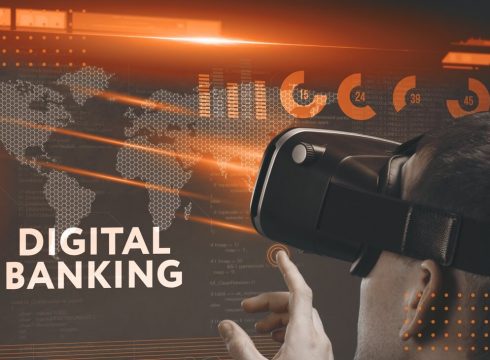What Does It Take to Deliver Modern Digital Experiences?

We have seen how good design elevated many companies to the next level in the past decade. Apple has been the forerunner in emphasizing the importance of designing coherent end-to-end experiences. Logitech made a comeback with its innovative products and avoided being a commodity mouse-keyboard manufacturer. Leading global banks like BBVA and ING have transformed their processes to be more human-centric and shifted their focus from pricing and product portfolio to delivering excellent digital experiences.
Such shifts do not happen overnight. They require a change in mindset, gaining new skills, and the ability to let go of older ways of working. Regardless of the path they took to get there, companies that set themselves apart from the rest with the quality of their digital experiences share four common behaviours:
- They do not treat design as just pretty pictures.
- They hold everyone accountable for a good experience.
- They utilize a flexible workforce in smart ways.
- They put equal emphasis on design and production.
1 – Design is More than Pretty Pictures (and Post-its)
It is a common misconception that design is about the prettiness and the shiny coat. This is partially true. Aesthetics and pleasant look-and-feel are essential concerns of a designer. However, the design goes way beyond just good looks – it is about problem-solving. Modern digital experiences require elements from five different design disciplines to solve problems:
- User Experience Design: Understanding the user needs through research, determining the information architecture, creating coherent user flows, assisting with content.
- UI / Visual Design: Creating the moment-by-moment experience, managing attention during usage, gives final shape to the content.
- Service Design: Developing workflows and processes that deliver value without friction, advocating for these flows within the organization, contributes to content.
- Graphic / Communication Design: Setting the tone of the conversation between the company and the users, highlighting the purpose and the value of the offering, influences the content.
- Immersive Design: An emerging discipline that design experiences in AR, VR or virtual audio environments.
There is not a single person in the world who can do all of these successfully at the same time. Some companies have entire armies for each discipline, some companies group these responsibilities and assign them to existing roles. The key point is the representation of all five disciplines. (four, if you are just working with apps and websites)
2 – Everyone is Responsible for the User Experience
A design team that embodies skills from the five disciplines above is a mighty team. However, one team alone cannot deliver a great end-to-end user experience. That is why great design teams help everyone in the company approach problems from a human-centred perspective and offer solutions that would improve the users’ experience. There are some common ways of sharing this responsibility:
- Direct customer contact: Companies who are great at understanding user needs allow every employee to have direct contact with customers/end users. They don’t have a single department who claims to “own the customer”. Everyone has the basic training on how to talk to customers, conduct research regularly, and gain insights directly from users.
- Power to create: Innovative companies allow everyone in the organization to create and prototype experiences. They don’t have a single team that plays the police in what gets designed and what gets ignored. They create design systems to make digital creation easy and make design tools available to everyone in the organization.
- Collaboration over bickering: Clear, considerate, and deliberate actions are key to creating high-quality digital experiences. Playing politics, heavy top-down decision-making, and lip service agile stand in the way of creating good digital experiences efficiently. Great teams collaborate in real-time through workshops or shared transparent workspaces (physical or digital) to boost input from everyone and arrive at crisp, powerful decisions efficiently. This allows them to improve services with a constant cadence and to fix problems instantly.
3 – Thriving on Flex Workforce
It may feel like you would need a battalion of designers and well-trained employees to be able to create amazing digital experiences. That is not a requirement. Modern companies use flex workforce in smart ways to boost their capacity and focus on where they can add the most value.
There are three types of flex resources you can use for designing experiences. Successful companies craft a balanced strategy based on their strengths and weaknesses to mix-and-match all three kinds of resources based on their needs.
- Partners: A partner is an agency or a group of designers/researchers that help you with your projects. They have a long-running relationship with you, so they are very informed about your organizational needs and strategy. They are experts in their domains, and in most cases can take responsibility for delivering the project themselves.
- Consultants: A consultant is an expert in the field with lots of experience. They bring their experience to the organization to help the internal teams overcome challenges on their own. They provide guidance, training, audits and coaching to various levels of the organization, from the most junior staff to executives. Their involvement is usually limited and they rarely deliver projects due to their costs.
- Doers: This is a group of designers or agencies that undertake the work that you don’t want to do. These people are extremely skilled in their area of focus and they can deliver what you outsourced to them much faster than you can, with higher quality. This frees up your time to focus on areas where you can deliver better value.
There is a key point here: The research, design and production are never fully outsourced. The internal teams always work with the external parties to learn from them and to impart knowledge to them.
4 – Equal Emphasis on Design AND Production
Your company may have the best design skills, employ the most human-centred team, and get support from the best consultants. However, if you cannot produce the designed experience as intended, this all goes to waste.
Companies that aim for great digital experiences care equally about designing and producing those experiences. They set up mature practices for front-end and back-end development, they craft their customer flows with the same attention to detail, they ensure that every touchpoint serves to create value and delight for the end-user of the product or service. They recognize that the work is not done when a release is made, and they keep monitoring the quality of the service to make sure that it is as great as it was intended.
Take a Step Forward
Companies that exhibit these four behaviours are ahead of the game in creating digital experiences. They leverage both internal and external design talent to simplify flows and create pleasant experiences, they enable every employee to learn about their users’ need first hand and suggest solutions, they see beyond pixels and treat the experience of the user as the backbone of their products and services.
If you are interested in being one of those companies, we suggest picking one of these behaviours and taking one step forward. Invest in training, collaboration, and iterative learning. Experiment with applying a human-centred approach in different disciplines in your company – from your call center to your accounting department. Try these approaches with these four behaviours in mind, every day. Once the roots get hold, you will be surprised to see how delighted your customers are with the top-notch digital experiences you create.



